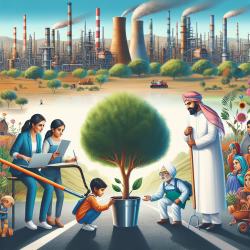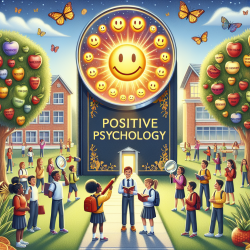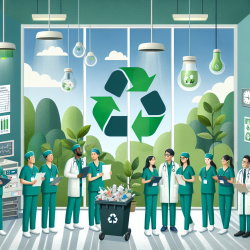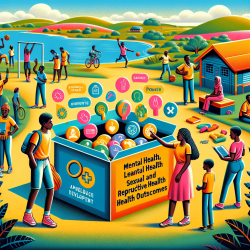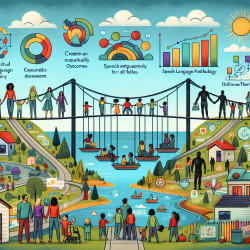Introduction
In the realm of speech-language pathology and child development, understanding the broader socio-environmental context is crucial. The study "Linking Industrial Hazards and Social Inequalities: Environmental Injustice in Gujarat, India" provides a compelling lens through which practitioners can enhance their approach to therapy and advocacy. By examining the intersection of industrial hazards and social inequalities, this research offers insights that can inform data-driven decisions and improve outcomes for children.
Understanding Environmental Injustice
The study conducted in Gujarat, India, highlights the disproportionate exposure of socially disadvantaged communities to industrial hazards. Using generalized estimating equations, the researchers identified significant associations between the density of major accident hazard (MAH) units and socio-demographic factors. The findings reveal that areas with higher urbanization and lower home ownership rates are more likely to host these hazardous facilities, impacting socially disadvantaged populations such as Scheduled Castes and Scheduled Tribes.
Implications for Practitioners
As practitioners dedicated to fostering positive child development, it is imperative to consider the environmental context in which children live and learn. The presence of industrial hazards can have profound effects on children's health and cognitive development. Practitioners can leverage this understanding to:
- Advocate for Safer Environments: Engage with local communities and policymakers to advocate for safer living conditions and reduced exposure to industrial pollutants.
- Incorporate Environmental Context in Assessments: Consider environmental factors when assessing children's speech and language development, recognizing that external stressors can influence outcomes.
- Promote Awareness and Education: Educate families and communities about the potential impacts of environmental hazards on child development, empowering them to seek change.
Encouraging Further Research
The study underscores the need for continued research into the effects of environmental hazards on vulnerable populations. Practitioners can play a pivotal role in this effort by collaborating with researchers to gather data and insights from their own practice. By contributing to the body of knowledge, practitioners can help shape policies and interventions that prioritize the health and well-being of children.
Conclusion
Incorporating the findings of this research into practice not only enhances the effectiveness of therapy but also positions practitioners as advocates for social and environmental justice. By understanding the links between industrial hazards and social inequalities, practitioners can drive meaningful change and create better outcomes for children. To delve deeper into the research, practitioners are encouraged to read the original paper: Linking Industrial Hazards and Social Inequalities: Environmental Injustice in Gujarat, India.
